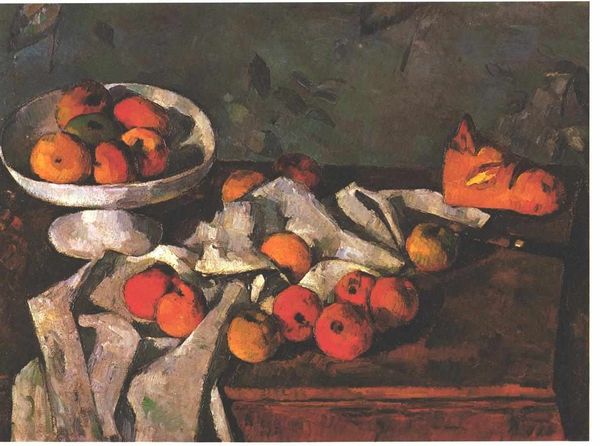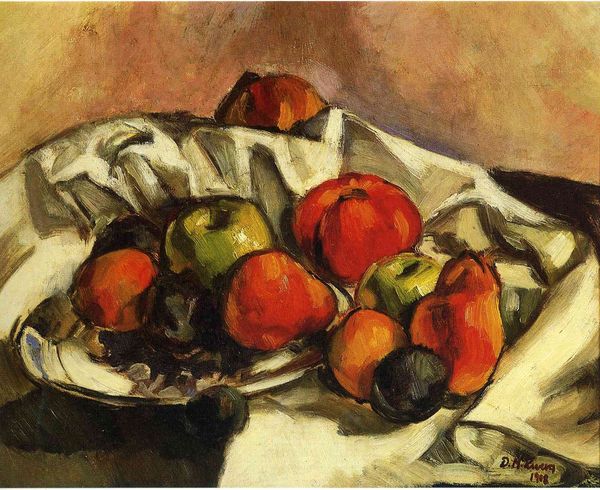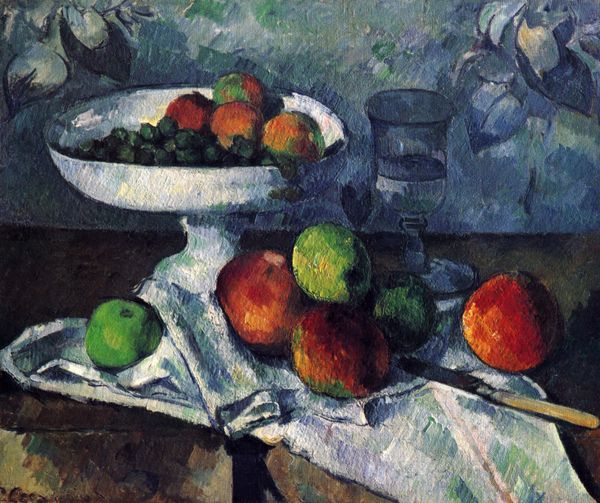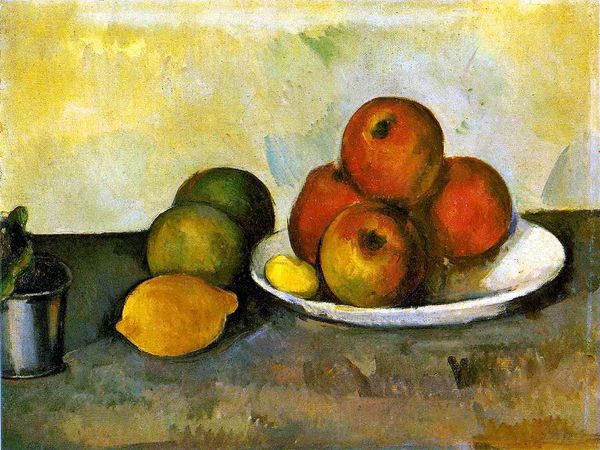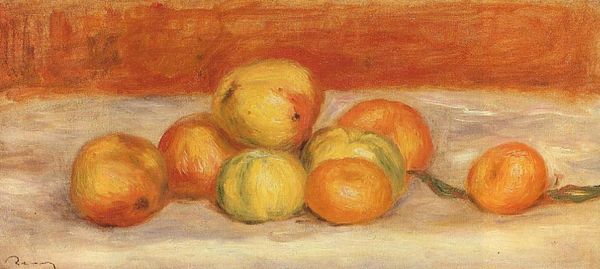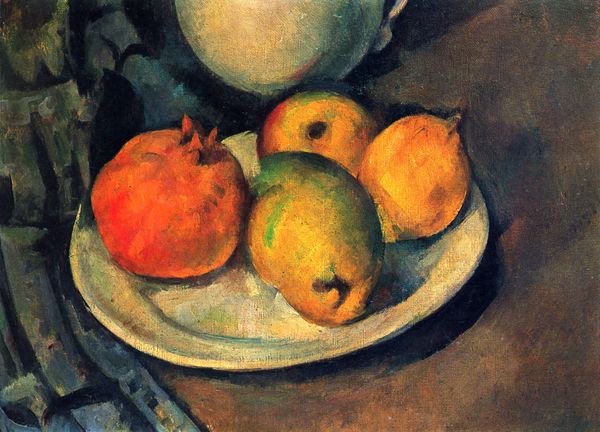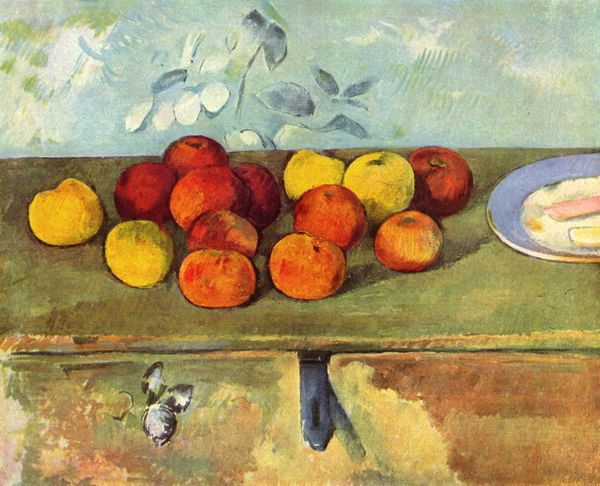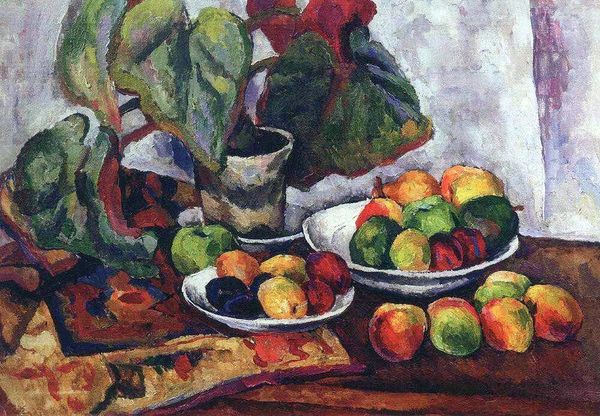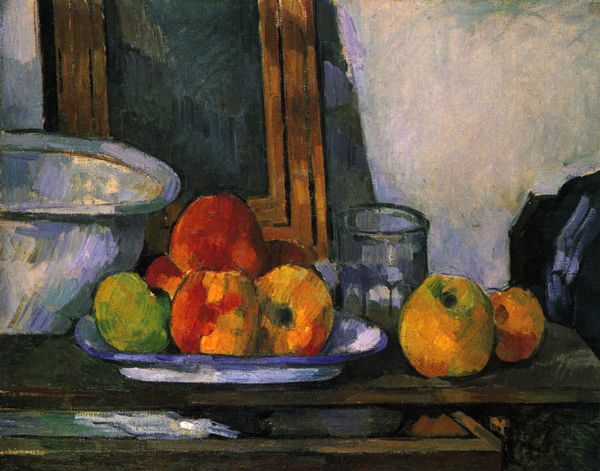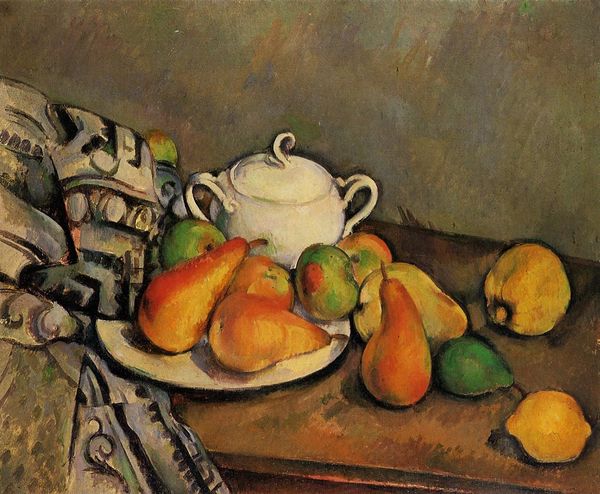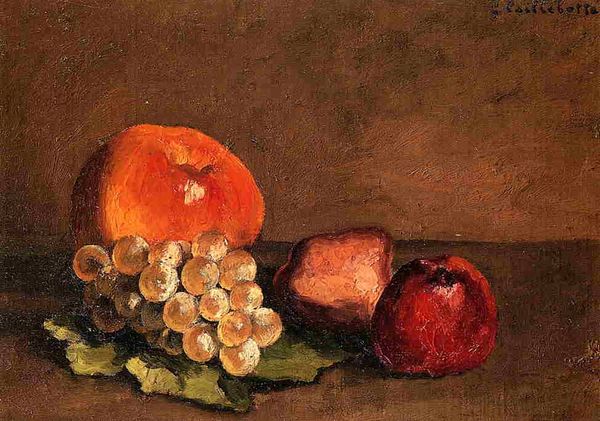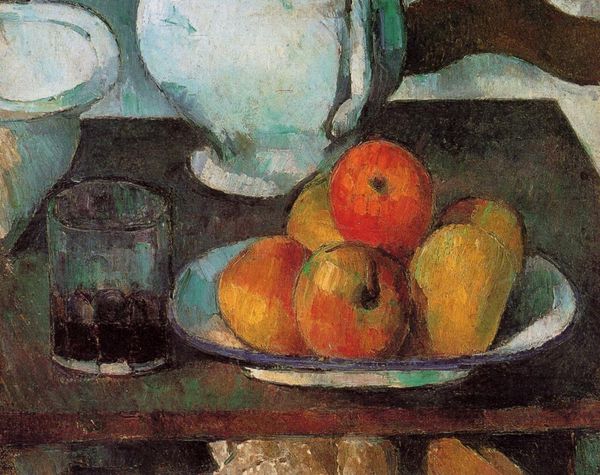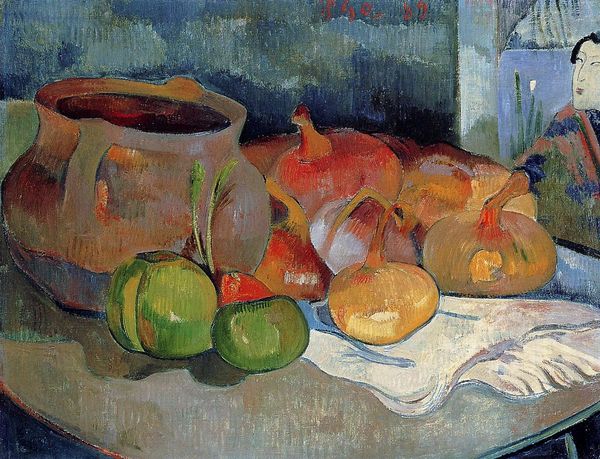
painting, oil-paint, impasto
#
still-life
#
painting
#
oil-paint
#
oil painting
#
impasto
#
fruit
#
post-impressionism
Dimensions: 33 x 46 cm
Copyright: Public domain
Curator: Here we have Paul Gauguin’s "Still Life with Oranges," created in 1881. Editor: Well, my immediate impression is one of vibrant, almost aggressively bright energy. The oranges practically jump off the canvas. Curator: Indeed. Observe how Gauguin utilizes impasto, building up thick layers of oil paint to create a palpable sense of texture, notice the contrast between the cool porcelain and the warmth of the fruit itself. Editor: The oranges certainly feel significant beyond just being… oranges. Throughout history, they've been potent symbols: abundance, fertility, even immortality in certain contexts. This is definitely not a casual tabletop arrangement. Curator: An interesting reading. Yet the composition is fairly conventional for the still-life genre: a table, a bowl, some fruit, a few accoutrements like the small knife… However, consider how the patterned background flattens the space, creating a deliberate ambiguity of depth. Editor: Do you think that shallow space amplifies the symbolic presence of the oranges, forcing us to engage more deeply with their cultural significance? It almost feels like a symbolic offering laid bare before us. Curator: Perhaps. The knife does introduce an element of disruption, almost violence, into what would otherwise be a tranquil scene. Its presence destabilizes the conventional harmony of the still life. Editor: Or does it signal a deliberate act? Consider how citrus fruits historically cleansed spaces and bodies. Perhaps it represents more of a spiritual rite. Curator: You know, your reading is certainly... intriguing. What I find truly fascinating is the way Gauguin foreshadows his later, more radical explorations of color and form. This is not yet Tahiti, but we see glimpses of the artist he would become. Editor: Well, this painting certainly offers a lot to chew on—pardon the pun. I leave here with a renewed interest in Gauguin, seeing more than just still life. Curator: Indeed. A seemingly simple arrangement opens pathways to consider deeper compositional, material, and historical implications.
Comments
No comments
Be the first to comment and join the conversation on the ultimate creative platform.

